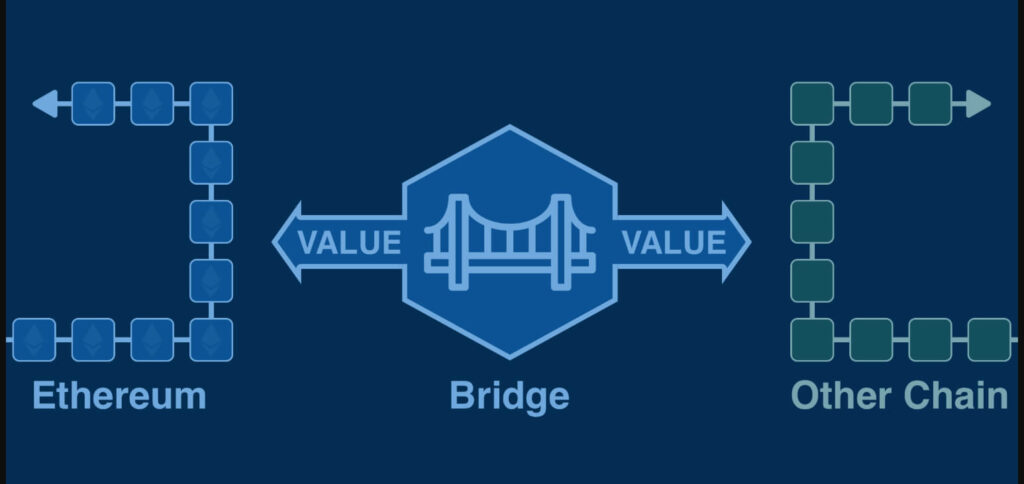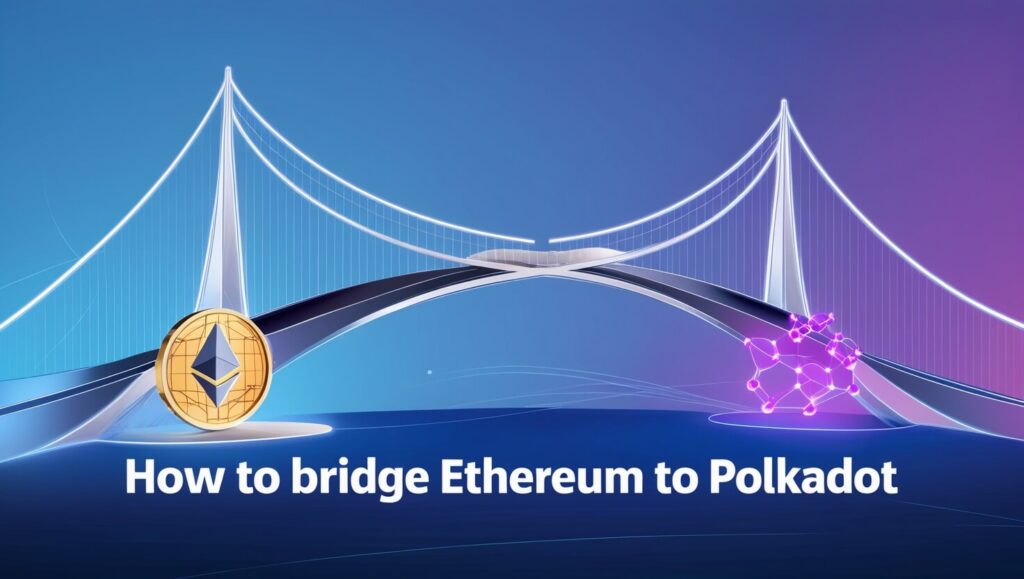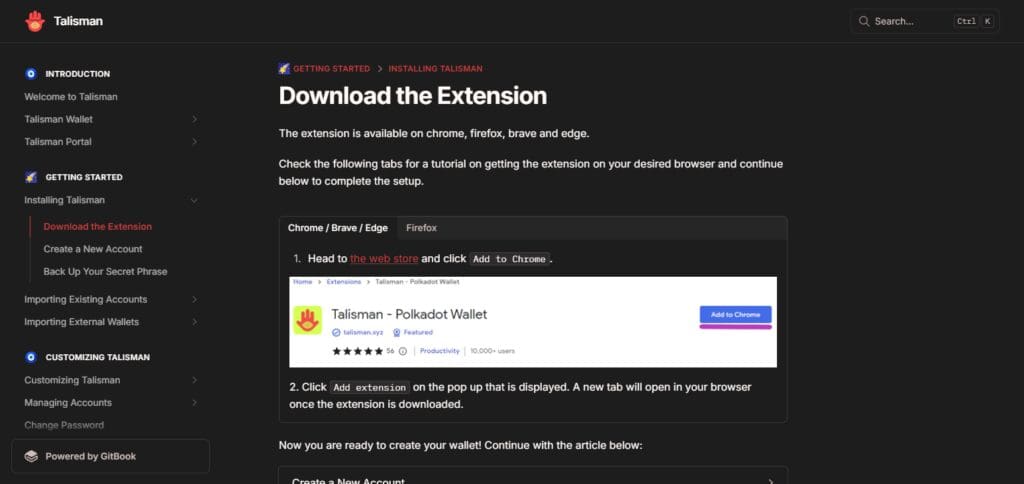In this article, I will discuss the Bridge Ethereum to Polkadot, including the steps involved, tools required, and essential safety tips for cost-effective transfers.
Bridges allow you to move your assets from one blockchain to another, so now you can enjoy the benefits of faster transactions and lower fees on Polkadot while still holding assets on Ethereum. Let’s explore how you can do it safely.
What is Bridge?
A blockchain bridge is a set of protocols that allows for the transfer of information, data, or assets between two blockchain networks.
This protocol allows for differing networks to interact with one another, meaning that users can transfer tokens or utilize different services on various chains.

For instance, when a user bridges Ethereum to Polkadot, the user is able to use the Polkadot environment whilst owning Ethereum-based assets.
Most blockchain bridges utilize wrapped tokens, liquidity pools, or even cross-chain messaging protocols for their transfers. Nonetheless, they have risks, such as being vulnerable to hacks which makes their security and reliability very important.
How to Bridge Ethereum to Polkadot

Step by Step Procedure to Bridge Ethereum to Polkadot via Snowbridge
Create your Wallets
Ethereum Wallet: Create an account on MetaMask or deposit ETH into existing wallets. Also ensure you have enough Ethereum to cover the gas fees alongside the assets that you wish to bridge, such as ETH or ERC 20 tokens.

Polkadot Wallet: Download Talisman or Polkadot.js browser extension and create a new account or import an existing one to receive assets on Polkadot.

Go onto the Snowbridge Website
Search for the Snowbridge official website using the following urls (https://app.snowbridge.network or use the portals of the Polkadot ecosystem). Never forget to double check URLs to protect yourself from phishing scams.
The interface requires you to link Polkadot.js Talisman and Metamask wallets. Therefore, please ensure to connect both wallets.
Choose Assets and Amounts
Select the bridging asset such as ETH or USDT and note that Snowbridge only supports native ETH as well select ERC-20 tokens.
Transfer amounts are also to be specified but check the minimum and extra ETH needed for gas fees.
Transfer Initialization
Define the destination address in your Polkadot wallet.
When reviewing the transaction, remember to check the fee limits, amount, and estimated time of arrival as this will vary depending on the network congestion from a couple of minutes to hours.
After you click bridge (or transfer) approve the transaction on MetaMask which will lock the assets into Snowbridge Ethereum smart contract.
Post-processing time
Polkadot’s relay chain snow bridge validators and Ethereum’s finality proofs allow for a trustless system. This approach leverages only code and consensus without a middleman.
You may now monitor the Snowbridge interface or Polkadot.js to see what stage the assets are wrapped (for example wETH) on the asset hub or moonbeam parachain.
Use and verify
Confirm bitcoin payment receipt through your Polkadot wallet. The assets could be found on a specified parachain, aka the asset hub.
In the Polkadot ecosystem individual assets can be staked, swapped, and interacted with on dApps.
Top Bridge Ethereum to Polkadot
Darwinia Network
Darwinia Network acts as a bridge between Polkadot and Ethereum while allowing movement of data between the two ecosystems.

A decentralized bridge is used to transfer assets and data between Ethereum and Polkadot networks which makes secure data exchange efficient.
Having the two blockchains interconnected makes it easier for decentralized applications to be flexible and scalable making Darwinia a powerful blockchain in the network.
Why Bridge Ethereum to Polkadot?
The process of Bridging Ethereum to Polkadot is advantageous due to several factors:
Lower Transaction Fees
Users of Polkadot will, more often than not, pay a far lower gas fee when Ethereum is not the base token used, as Polkadot’s network usually saves gas.
Scalability
Congestion problems, so often encountered on Ethereum, are less of an issue with Polkadot’s speedy and more scalable transactions.
Access to Polkadot’s Ecosystem
Possessing Ethereum-based assets enables users to take advantage of Polkadot’s DeFi, NFT and parachains ecosystems.
Cross-Chain Functionality
Bridging has the potential to increase liquidity with seamless asset transfer access on both networks and improves DeFi expansion possibilities.
Interoperability
It increases blockchain interoperability enabling dApps access features of multiple chains instead of just one.
Tips for Safe and Cost-Effective Bridging
Check Reputable Bridges
Make sure to use trusted bridges like Snowbridge or ChainBridge to prevent losing money to scams.
Check for Smart Contract
Always check the bridge’s contract address, as this is the most common way hackers phish users and set up fake platforms.
Gass Fees
Use the bridge during times of low network activity for less gas fees. Make sure to monitor gas fees using Etherscan Gas Tracker.
Use Slow Start Bridges
Start off by transferring small amounts of crypto- not only will this test the bridge, but it allows you to verify its reliability.
Update Software
Try using the latest version of a wallet or an app to further avoid losing money to hackers.
Two-Factor Authentication
Ensure that you secure access to your funds by adding another layer of protection.
Pros & Cons
Pros:
Reduced Costs: Transactions on Polkadot are cheaper than those on Ethereum.
Higher Speeds: Polkadot processes transactions faster.
Participation in Polkadot’s Ecosystem: Access to Polkadot’s DeFi, NFTs, and parachains.
Increased Cross-Chain Functionality: Improves interoperability for dApps and DeFi projects.
Less Congestion: Polkadot architecture helps alleviate congestion problems.
Cons:
Lack of Protection: Vulnerability to hacks and exploits is present with bridges.
Overhead Waits: Delays are possible with cross-chain transfers during heavy congestion.
Increased Difficulty: A higher degree of technical skills is needed to accomplish bridging.
Double Gas Costs: Paying fees on both platforms increases overall spending.
Few Bridge Options Available: Not many established bridges are available.
Conclusion
To summarize, bridging Ethereum to Polkadot facilitates new possibilities due to the ability to interoperate with chains.
It enables users to harness Ethereum assets while availing of Polkadot’s ecosystem with its lower transaction fees and swift processing.
While the bridging process has several steps and some risk to security, utilizing a trusted bridge platform and sticking to some safety rules can enable seamless transfers.
As cross-chain blockchain interoperability progresses, constraining Ethereum and Polkadot bridges will be essential for DeFi, NFTs, and cross-platform DApps capabilities.










